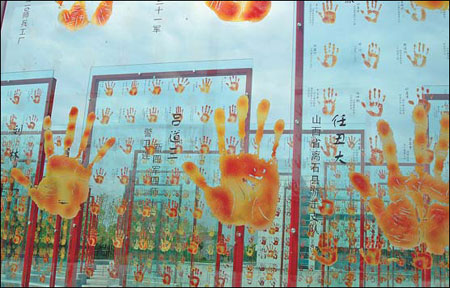Profiles
Quiet! History speaking
By Lin Qi (China Daily)
Updated: 2010-09-19 07:36
 |
Large Medium Small |
 |
|
Bloodied palm prints signify the ravages of war. Provided to China Daily |
Perhaps Fan hopes his museums will be more accurately objective. His collection of historical evidence will be displayed in chronological order at the Japanese Invasion Army Museum, now under construction and due to open next year.
He needs to persuade more than the Chinese that there are two sides to every story. He says Japanese right-wingers still deny that 300,000 Chinese were killed in the Nanjing Massacre. But, he has Japanese military records of the killing of at least 50 Chinese civilians and 80,000 disarmed soldiers after Nanjing fell.
"Invasion and slaughter cause enduring harm to a nation and its people. My exhibits intend not to stir up hatred or revenge, but advocate peace and friendship," Fan says.
And as a finishing gesture of cooperation and perhaps, reconciliation, Fan specially flew in 73-year-old Japanese architect Arata Isozaki to design the war museums.
The five-museum complex includes the Mainstay Museum and Frontline Battlefield Museum, which documents notable battles waged against Japanese invaders by the Communist and Kuomintang armies. There is also the Flying Tigers Museum, which pays homage to the US volunteer air force which flew mercy missions from Thailand, and a Sichuan Resistant Army Museum.
The Unyielding Chinese War Prisoners Museum has stirred up some controversy mainly from those who feel that these prisoners-of-war humiliated their country and did not deserve a place in history.
Fan displays old photographs that recorded the dignity of these Chinese war prisoners in the face of ill treatment and humiliation by the enemy. To him, they are heroes - forgotten and ignored - and they deserve as much respect as those of their comrades who died on the battlefield.
In his museums, you can find rare perspectives from both sides. You can also find vindication and maybe, finally, reconciliation.